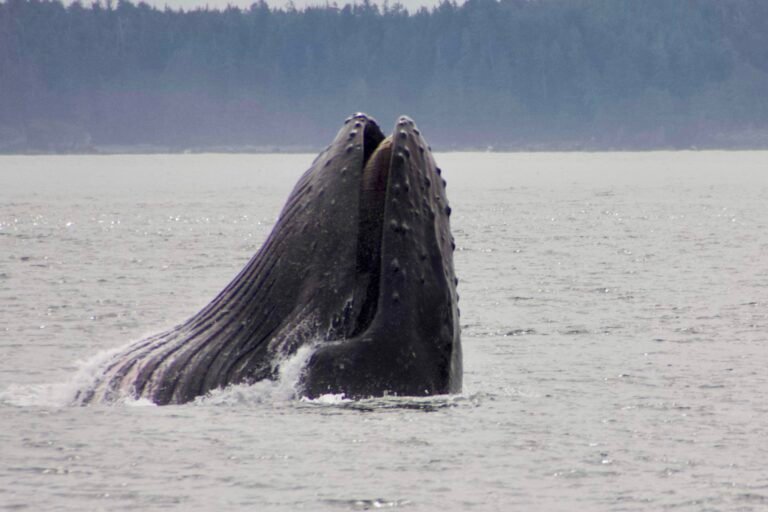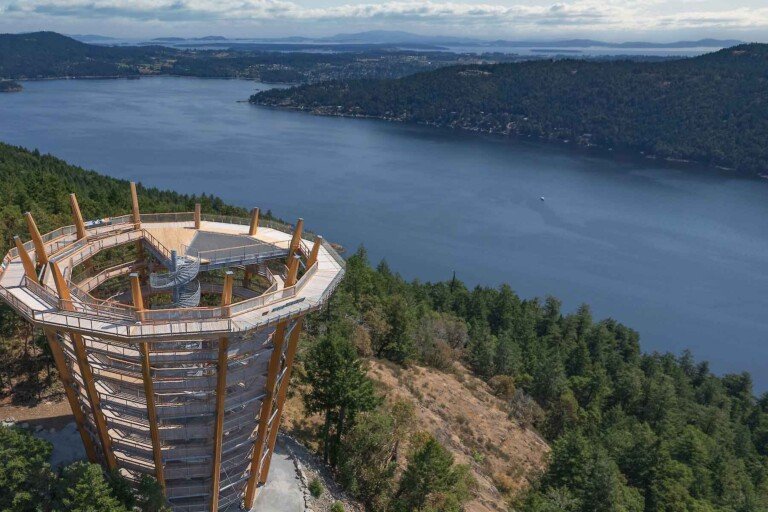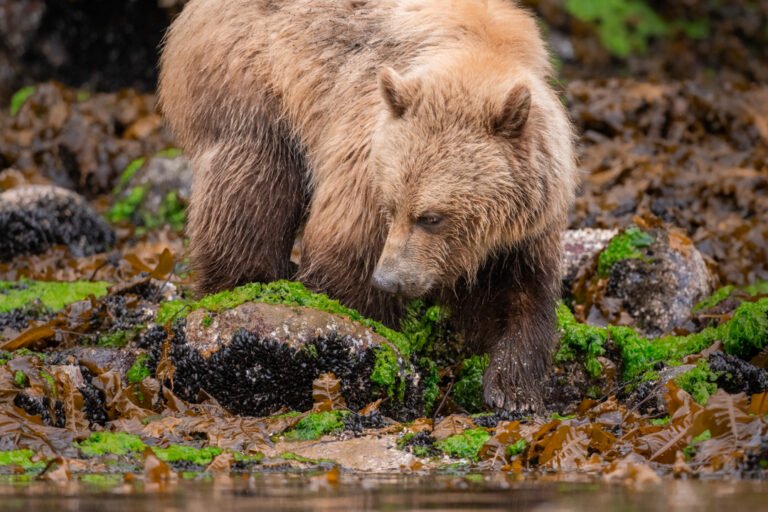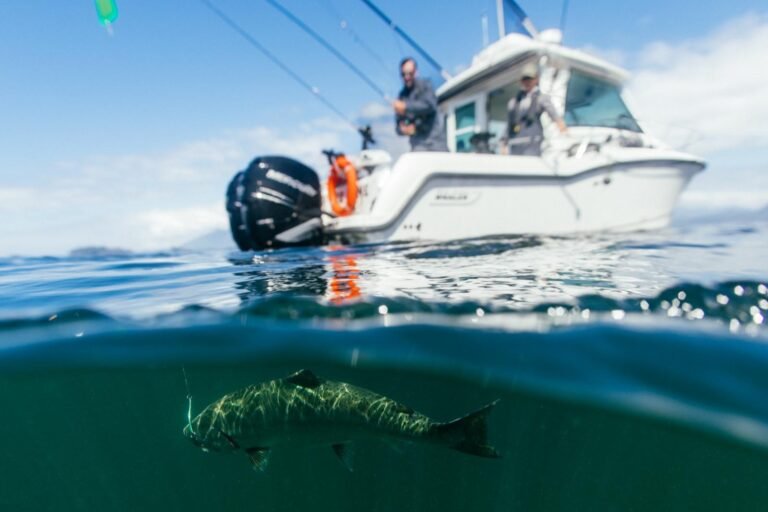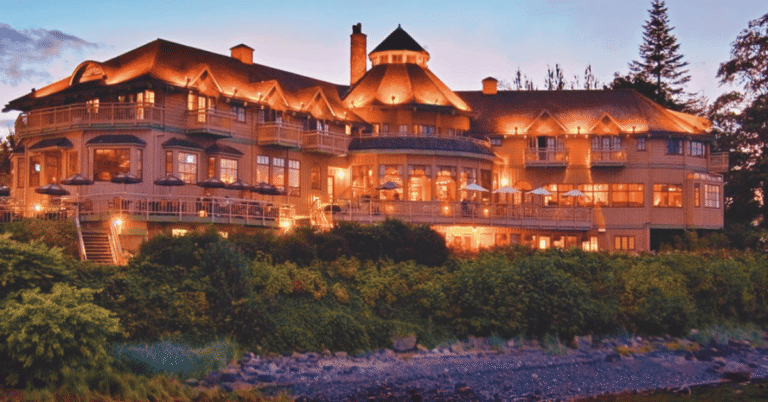In the Kootenay River and Cross River Valleys, the Cross River Canyon Trails are operated by Nipika Mountain Resort in partnership with the Province of BC (BC Ministry of Forest, Lands and Natural Resource Operations). The Cross River Canyon Recreation Site spans across 1500 acres and is designated as a non-motorized/ non-shooting Recreation Site specifically for skiers, snowshoers, cyclists, hikers and runners.
During cross-country ski season, the trails are regularly professionally groomed for both Classic and Skate Skiing. The trails from the resort to the Cross River are novice, intermediate to expert, while the trails across the Natural Bridge on the north side of the Cross River are expert. The South Loops are great beginner terrain.
Nipika is set amid a 100-kilometre scenic trail network built and maintained for mountain biking, hiking and trail running in summer, and cross country skiing and snowshoeing in winter. The trails combine the 30 kms of double track, rolling cross country ski trails, suitable for novice and intermediate riders, with 30 kms of technical, rooty, difficult single track following the Kootenay River and Cross River Canyons. Steep twisty descents and gut-busting climbs in spectacular scenery are the signature features of this extensive network of trails.
If you don’t have the gear, Nipika offers a range of rental equipment including mountain bikes and helmets in summer, and cross country skis, poles and boots, and snowshoes and poles in winter.
To access the Cross River Canyon Trails, travel east for 20 kms from Radium Hot Springs on Hwy 93 into Kootenay National Park, then turn on to Settlers Road and drive 14 kms to Nipika Mountain Resort. The trailhead is the day lodge at Nipika, which has trail maps available.
Sea amidst one of the last great pristine wetlands in North America, Golden is fast becoming one of BC’s most sought-after cycling destinations. Flanked by both the Rocky Mountains and the jagged Dogtooth Range, with the Trans-Canada Highway rolling right through the middle, for riders in the know, Golden’s cycling opportunities, especially for the freeride and downhill set – are endless. Headlining the region are the trails of Mt. 7, home of the longest singletrack downhill race in the world. Look a little further and there’s lots more: lift-accessed downhill at Kicking Horse Mountain Ski Resort, roller-coaster cross-country singletrack at the Moonrakers, and touring the verdant Columbia Valley down scenic Highway 95.
Across the Columbia Valley from Mt. 7 is another riding hot spot, Kicking Horse Mountain Resort. Probably the most underexposed bike park in Canada, one ride up the resort’s 1,250-metre (4,000-foot) gondola reveals its unlimited potential. From the top, drop into alpine singletrack on Rock Garden, then enjoy linking up yet another Golden-style vertical kilometre of riding. Options are plenty, ranging from fall-line steeps on Pioneer, super long rock slabs on Rock N’ Roll, machine-manicured blue and green rated trails, and huge berms,log rides, and tabletops on Buffalo Jump. Brake fingers and pads are guaranteed to burn out long before stoke levels do.
Freeride mountain biking in Golden is, as the locals say, “going off.” It’s all singletrack downhilling, steep and dry, with a nice blend of technical lines and buttery-smooth speed. The much-touted Mt. 7 trail network starts more than a vertical kilometre above the valley. Several trailheads exist along the 14km (9mi) Mt. 7 Forest Service Road, featuring an abundance of options for all abilities. Starting at the road-top launch pad, be awed by the view before embarking on the longest, most unrelenting singletrack descent in the Rockies. Feeling a little crazy? Hit the Psychosis race course. But, don’t worry, there are lots of sane lines, too. Be sure to finish with the natural dirt luge of Snake Hill (and high fives at Reflection Lake). Mt. 7’s hidden gem is the Summit (Belton’s) Trail, accessed by a hike-a-bike or heli ride. Heart-stopping ridgeline exposure drops into singletrack, winding down to the valley for 1,300 action-packed vertical metres (4,300 feet). For guiding or directions inquire at local bike shops.
Though it may seem predominantly downhill, Golden does escape dual-suspension gravity. Even devout huckers spend time over on the Moonraker cross-country trails, one of the finest flowing singletrack systems in BC. Spend a day on the lower loops, between the hamlet of Nicholson and the Cedar Lake Recreation Site, for up-anddown-all-over good times. Or dive into a long, rolling rip along the striking edge of a spectacularly incised river canyon on the upper Canyon Creek circuit. Bring a camera, stop and enjoy the view, and don’t look over the edge while in the saddle.
There are a number of smooth and scenic doubletrack rides in the Golden area. Highlights include old fire roads through the wilds of Blaeberry Valley, complete with glacier views. A nice traverse of the west side of the Columbia Valley begins north of town at the https://britishcolumbia.com/wp-content/uploads/2020/07/discovery-islands-lodge-1-accommodation-quadra-island-british-columbia-1.jpg Forest Service Road and links up south to Nicholson. For casual jibbing and jumping, Golden has a brand new concrete freeride park. For dirtier fun, there is a modest dirt jump track at the bottom of Mt. 7. Golden is the gateway city to the classic 315km (195mi) Golden Triangle loop.
Under the towering limestone peaks of the Rocky Mountains, where the mighty Columbia Valley separates two of BC’s most spectacular mountain wildernesses – the Rockies and the Purcells. Invermere is fast becoming a cycling destination known for its excellent climate and stunning views. Here, cyclists will find everything from all-day cross-country adventures in the rough and rugged, to easy morning loops around Lake Windermere. Invermere is also the gateway to Panorama Mountain Village, with one of the best lift-accessed bike parks in BC. Because of its location in an expansive valley, Invermere offers easy access to the backcountry, where typically soft, sandy soil enables rides for all abilities and styles.
The most popular downhill ride in Invermere is Mount Swansea, a scream from top to bottom. The mountain is the site of an old copper mine named after Swansea, Wales, where the ore found here was originally sent for smelting. Look around near the upper parking lot and you’ll find the old mine shaft. The top half of Mount Swansea is steep and rocky; built-up features are few and full armour is a must. About halfway down the exposed, jagged rock gives way to sandy soil and a selection of wide-open tracks. The lower portion features built-up bridges, teeter-totters, and one kicker that’ll send you to the moon. Steamboat Mountain near Radium Hot Springs, 15km (9 miles) north of Invermere, is another hot spot for downhillers. The mountain’s backside offers beautifully smooth, sandy terrain perfect for freeriders of all abilities. The mountain’s front side, called Red Rock, is a steep track that requires full armour and full suspension.
When it comes to cross-country riding, Invermere and the surrounding area offers unlimited terrain that riders of all abilities will enjoy. The hilly topography of the area is home to countless singletrack loops through the sand and shale – trails that will etch a permanent grin on your face. The cross-country ride most synonymous with Invermere is the Canyon Trail: a buttery track just outside of town that flows beautifully and offers stunning views of the cobalt blue waters of Toby Creek. Eight kilometres (5mi) out of Invermere, on the way to Panorama, is a beautiful piece of singletrack known as Along the Schlong (sorry to offend, but that’s the name). Be warned, it’s some of the most demanding riding in the area with many natural features and steep drops.
The Panorama Bike Park, located 25km (15mi) west of Invermere, offers the area’s only lift-accessed riding. Open daily from June through September, its trails are rated beginner to expert. Since the four-season resort opened to mountain bikes it has grown steadily. Nearly 450 metres (1,476 feet) of vertical, a high-speed lift and a trail crew of five full-time builders make Panorama a must-visit for any off-road rider. Less experienced freeriders will get a kick out of trails like Quadzilla. Adrenalin junkies should check out trails like the heavily-built Crazy Train or Insanity, which feature the Cliffs of Insanity, the gnarliest section on the mountain. New at Panorama is Alcatraz, a stunt trail with teeter-totters to drops, a wooden berm and a diabolical skinny that ends in a narrow rubber belt bridge.
Turn-of-the-century horse and auto roads are all over the Invermere Valley, offering doubletrack rides and a great way to get out and tour the area. Starting right from Invermere, the road running through Zehnder’s runs parallel to the Canyon Trail, the old Toby Creek bridge and the backdoor route to Panorama. Twenty kilometres (12mi) south of Invermere on Highway 93/95, just north of Fairmont, you’ll find the trailhead of the Spirit Trail, a doubletrack journey that follows the eastern side of Columbia Lake all the way to Canal Flats. Beginning at Dry Gulch, halfway between Invermere and Radium Hot Springs, is another picturesque stretch of doubletrack that runs parallel to the beautiful Columbia Wetlands, one of the most intact wetland environments remaining in North America.
Invermere has a jump park near Toby Creek – inquire at local bike shops for directions.
Only 30 kilometres apart, bordered by the Rocky Mountains to the east and the Purcell Mountains to the west, are the bustling cities of Kimberley and Cranbrook. In between, the adventurous cyclist will find a myriad of lesser-known mountain biking and road-touring opportunities. Blessed by one of the sunniest climates in British Columbia, the area’s business centre is also a haven for outdoor sports. In the spring, when many BC towns are still snowbound, local mountain bikers enjoy dry trails and warm weather. Kimberley, the ‘Bavarian City of the Rockies’, attracts summer visitors with its charming themed downtown, numerous festivals and its Platzl, an esplanade punctuated with picturesque shops, hanging baskets and hand-painted fire hydrants. Although the word has yet to spread beyond the narrow walls of the Columbia Valley, mountain biking in the area is well-developed and popular with locals. With several recreational trail areas open to mountain biking and several shuttle-accessed mountains, both freeriders and cross-country riders are sure to find the trail of their dreams.
Although the area is not well-known for its downhill/freeride opportunities, if you can pry the well-kept secrets out of friendly locals, you’ll find top-notch freeriding in several locations around Cranbrook and Kimberley. The best place for downhilling is Bootleg Mountain, between Marysville and Kimberley. To access these trails drive up St. Mary’s Road and turn at the Bootleg Mountain sign. A 2WD road takes you all the way to the top, where expert trails drop riders 900 vertical metres (3,000 feet) back to the road. Steeps and exposure abound, so make sure your skills are up to snuff. Other areas for freeriding include Baker Mountain near Cranbrook and the many trails at Kimberley Alpine Resort, both on and offresort.
Cross-country riders in search of enlightenment will find fat-tired nirvana among the many trails in the Cranbrook and Kimberley area. Most of the trails are found in welldeveloped and marked recreational areas. In Cranbrook, the majority of trails can be found in the Community Forest and the South Star cross-country ski area. A fantastic ride known as Hungry Hounds connects the two. In Kimberley, the excellent Kimberley Nature Park offers dozens of trails for the cross-country enthusiast. Some are old roads, some are footpaths, some are singletrack trails hand-built by volunteers. Please be aware that many hikers and families use these trails, so ride with caution, especially around corners, and respect other users. The trail networks in the Cranbrook Community Forest and Kimberley Nature Park are quite extensive with many junctions – make sure to bring a map. For those passing through Creston, consider stopping at the Creston Valley Wildlife Centre where 32km (20mi) of flat-top dykes wind through beautiful valley bottom wildlands.
The Kimberley and Cranbrook area is blessed with numerous highways and quiet rural and backcountry roads and is well suited for the recreational road rider. The scenery is pastoral and spectacular, with many mountain peaks dotting the landscape. There are two short Rails to Trails stretches in the East Kootenay, both offering scenic rides through the rolling plains and forest of the Rocky Mountain Divide. For more information contact Rocky Mountains Rails to Trails.
Formerly the playground of locals and a handful of Calgarians, the word is now out on Fernie. This quiet resource town has, in recent years, garnered international attention for its world-class outdoor opportunities: the crystalline Elk River, renowned for fly-fishing and whitewater, winds its way lazily through town, while the jagged peaks of the Lizard Range hold many rewarding hiking trails. The town itself is friendly and charming, with an excellent selection of hotels and restaurants. But it is mountain biking that has put Fernie on the summer map. Previously known for its cross-country riding, in recent years Fernie has caught the attention of the freeriding crowd, with Fernie Alpine Resort’s lift-accessed trail network leading the charge. Throw in a dirt-jump park and a handful of excellent long-distance touring opportunities and you’ve got all the ingredients for one of BC’s best cycling destinations.
Revered for its legendary snow, Fernie Alpine Resort is quickly developing a reputation as one of the top mountain bike resorts in Western Canada. With over 600 vertical metres (2,000 feet) of riding, a fulltime trail-building and maintenance staff, and dozens of trails ranging from beginner to North-Shore-extreme, FAR is a must-visit on any serious freerider’s list. Beginners will find trails such as Honey Bee an excellent introduction to mountain biking, while experienced riders will love rides like Top Gun and the Canada Cup downhill course.
While Fernie Alpine Resort offers up the majority of Fernie’s downhill riding, no freerider’s visit to Fernie would be complete without a visit to Al Matador, a legendary epic that starts at the top of Morrissey Ridge and drops over 900 hair-raising metres (3,000 feet), finishing with the sublimely built trail, Three Kings. With ridge riding, exposed steeps and challenging stunts, Al Matador is one of BC’s best expert rides. Another Fernie epic is Porcupine Rim, a steeps-filled descent high above town, requiring a shuttle and some hike-a-bike, but worth every gruelling step. For shuttles to either of these trails, contact Backcountry Safari Shuttles (see Services sidebar for contact info). Consult the Fernie Trail Map and local bike shops for information regarding other freeriding opportunities in the area.
Even though freeriding has created quite a buzz recently, cross-country trails in the area remain classics and popular favourites, even with freeriders.With easy access and close proximity to town, many of these trails are an easy after-work or post-dinner ride. The typical Fernie cross-country trail involves linking several short trails into one funfilled cross-country experience. There are three main areas for the cross-country enthusiast to explore, each with their own character: The Ridgemont Road area (also known as The Clearcut) offers variety, easy climbing, and a network of short trails easily combined into a full day of fun; River Road features tight trees and rooty fun; while Mt. Fernie Provincial Park has a labyrinth of tough climbs and smooth, fast descents with several challenging options.
While there isn’t an extensive highway network in the area, there are a handful of excellent road and backcountry rides for the long-distance cyclist. There are also several excellent loops for the backcountry enthusiast. A fun, informal dirt jump park exists at the south side of the West Fernie bridge and is open to all users. For BMX enthusiasts, the Fernie Skate Park across from FasGas is free.
For wildlife lovers, the Wigwam Flats loop affords excellent opportunities to view elk, moose, deer, bighorn sheep and other large animals. Start at the Elk River Bridge in Elko and ask at a local bike store for detailed directions.
With topography ranging from rolling forested hillsides to super steep mountain peaks, one of the best ways to experience all the region has to offer is to hit the road. With the greatest distance between major riding centres less than a five-hour drive away, it’s possible to spend a whole summer freeriding in the Rockies, experiencing the diversity of the region.


